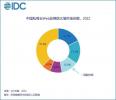
嵌入式系统可以根据云数据存储和分析能力得到相应扩展,但是在这种设备的整合与云技术之间还存在差距。
Windows Embedded嵌入系统亚太地区和大中华地区的微软市场营销总监John Boladian说,在扩大嵌入式计算范围方面,云计算扮演了“举足轻重的角色”。主管所指的是Redmond的观点,他认为,嵌入式设备可以通过云计算承载巨大数量并潜在有效的数据存储和数据分析。
在接受ZDNet Asia采访中,Boladian说:“能够从网络优势中获取情报会对企业创造价值产生深远变化。”
然而他说,行业还需填补嵌入式系统和未来智能系统之间的空缺。他指出:“在嵌入式设备中应用云计算并整合云技术还处在初级阶段。”
虽然存在差距,但他说,嵌入式设备在提供单一功能服务上已经走向成熟并且已经具备了有限的成为更加智能的系统的能力,这多亏了处理能力的提高以及软件的复杂化。
他还进行了进一步说明,他说,单一功能的嵌入式设备已经演变成了拥有处理器、操作系统和连通性都十分强大的“智能系统”。有了这些智能系统,企业就可以部署那些用来收集、分析和交流数据的复杂并互联的系统。
Boladian引用了IDC的调查,他说,2010年到2015年间,智能系统会翻两倍,接下来的五年也是一样。根据调查公司的报告,拥有连接互联网能力的嵌入式系统的单位发货量将从去年的14亿增长到2015年的33亿。
在亚洲地区,智能系统市场当前价值约1.44亿美元。根据IDC预测,2015年前,这一领域将拥有8亿设备,收入达45.5亿美元。
Boladian补充道,嵌入式市场给那些为此类设备大量生产和销售硬件软件的企业提供了“契机”。
Connecting embedded devices to cloud把嵌入式设备与云计算连接
微软现正致力于开发旨在填补嵌入式设备和云计算之间的空缺的软件。Boladian进一步指出,1996年软件供应商就已经带着他们的Windows CE 1.0产品立足于这个市场。
他说:“在前进的道路上,我们将继续提供一套把企业软件和云服务扩展到日用设备的产品,包括像服务点(POS)、产业自动化和医药器械等等。”
他指出,像汽车和医疗产业都在寻求嵌入式系统平台,不仅为了制造汽车和构建设备,还为了创建良好的客户体验、提高商业智能。
Boladian 说:“通过充分利用云计算 ,Windows Embedded 嵌入系统正在随时随地访问智能设备内部的‘数据流通’。”
在亚太地区,微软合作伙伴已在根据现有的Windows Embedded平台开发软件,他说。在明年上半年,这些合作伙伴将会有资源计划下一个Windows Embedded平台版本,vNext称。
The functionalities of embedded systems can be extended with cloud-based data storage and analytics capabilities, but there is still gap between the integration of such devices and cloud technologies.
According to John Boladian, Microsoft's marketing director for Asia-Pacific and greater China for Windows Embedded, cloud will play a "pivotal role" in expanding the scope of embedded computing. The executive was referring to Redmond's belief that embedded devices can leverage the vast amount of data storage and analysis available potentially via cloud computing.
"Being able to capture the intelligence from the edge of the network will make a profound change in the value it can deliver for enterprises," said Boladian, in an interview with ZDNet Asia.
However, he said the industry still needs to plug the gap between embedded systems and future intelligent systems. "The adoption of cloud computing as well as the integration of cloud technologies into embedded devices is still at the infancy stage," he noted.
Despite the gap, he said embedded devices have matured from serving single functions and having limited capabilities to become more intelligent systems, thanks to increased processing power and more sophisticated software.
Elaborating, he said single-function embedded devices have evolved to become "smart systems" with powerful processors, operating systems and connectivity. With these smart systems, enterprises are able to deploy complex, interconnected systems that collect, analyze and communicate data, he added.
Quoting research from IDC, Boladian said smart systems will more than double between 2010 and 2015, and again within the next five years. According to the research firm, unit shipment of embedded systems with the ability to connect to the Internet will grow from approximately 1.4 billion last year to over 3.3 billion in 2015.
In Asia, the intelligent systems market is currently worth about US$144 million. By 2015, this segment will clock 800 million units and generate US$455 billion in revenue, according to IDC projections.
Boladian added that the embedded market presented a "tremendous opportunity" for businesses that manufacture and sell hardware and software for such devices.
Microsoft is now focusing its efforts on software that aims to address the gap in integration between embedded devices and the cloud. Boladian further noted that the software vendor has been in this market since 1996 with its Windows CE 1.0 offering.
"Moving forward, we will continue to deliver a suite of products that extend enterprise software and cloud services out to everyday devices, which include examples such as point of service (POS), industrial automation and medical equipment, among others," he said.
He noted that industries such as automotive and medical are looking for an embedded systems platform not only to build cars and devices, but also to create good customer experience and improve business intelligence.
"By taking full advantage of the cloud, Windows Embedded is bringing anytime, anywhere access to the 'data currency' that resides inside our intelligent devices," Boladian said.
In the Asia-Pacific region, Microsoft's partners are already developing software based on the current Windows Embedded platform, he said. In the first half of next year, he added that these partners will also have resources to plan for the next version of the Windows Embedded platform, called vNext.











 京公网安备 11010502049343号
京公网安备 11010502049343号